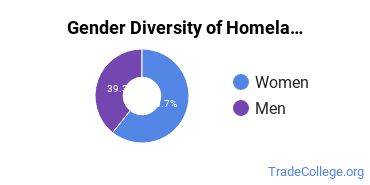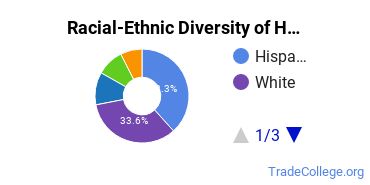Homeland Security, Law Enforcement & Firefighting at Solano Community College
Solano College is located in Fairfield, California and has a total student population of 9,251. During the the most recent year for which data is available, 107 students received their associate's degree in homeland security, law enforcement and firefighting.
Want to know more about the career opportunities in this field? Check out the Careers in Homeland Security, Law Enforcement & Firefighting section at the bottom of this page.
Featured schools near , edit
Solano College Homeland Security, Law Enforcement & Firefighting Degrees Available
- Undergrad Certificate in Homeland Security, Law Enforcement & Firefighting (1 - 4 Years)
- Associate’s Degree in Homeland Security, Law Enforcement & Firefighting
Online Classes Are Available at Solano College
Online courses are a good option for students who need a more flexible schedule that allows them to pursue an education when and where they want. Whether you're going to school part-time or full-time, you may find distance education the right choice for you.
Are you one of the many who prefer to take online classes? Solano College offers distance education options for homeland security, law enforcement and firefighting at the following degree levels:
- Associate’s Degree
Solano College Homeland Security, Law Enforcement & Firefighting Rankings
Homeland Security, Law Enforcement & Firefighting Student Demographics at Solano College
Take a look at the following statistics related to the make-up of the homeland security, law enforcement and firefighting majors at Solano Community College.
Solano College Homeland Security, Law Enforcement & Firefighting Associate’s Program

Solano College does a better job with serving racial-ethnic minorities than the typical school does. Its associate's program in homeland security, law enforcement and firefighting graduates 16% more racial-ethnic minorities than the nationwide average.*
The following table and chart show the race/ethnicity for students who recently graduated from Solano Community College with a associate's in homeland security, law enforcement and firefighting.

| Race/Ethnicity | Number of Students |
|---|---|
| Asian | 8 |
| Black or African American | 10 |
| Hispanic or Latino | 41 |
| White | 36 |
| International Students | 0 |
| Other Races/Ethnicities | 12 |
Concentrations Within Homeland Security, Law Enforcement & Firefighting
If you plan to be a homeland security, law enforcement and firefighting major, you may want to focus your studies on one of the following concentrations. The completion numbers here include all graduates who receive any type of degree in this field from Solano Community College. Some of these focus areas may not be available for your degree level.
| Concentration | Annual Degrees Awarded |
|---|
Careers That Homeland Security, Law Enforcement & Firefighting Grads May Go Into
A degree in homeland security, law enforcement and firefighting can lead to the following careers. Since job numbers and average salaries can vary by geographic location, we have only included the numbers for CA, the home state for Solano Community College.
| Occupation | Jobs in CA | Average Salary in CA |
|---|---|---|
| Accountants and Auditors | 148,600 | $84,430 |
| Computer Workers | 74,690 | $103,270 |
| Police and Sheriff’s Patrol Officers | 72,680 | $101,380 |
| Managers | 66,300 | $143,350 |
| Correctional Officers and Jailers | 34,980 | $75,400 |
References
*The racial-ethnic minorities count is calculated by taking the total number of students and subtracting white students, international students, and students whose race/ethnicity was unknown. This number is then divided by the total number of students at the school to obtain the racial-ethnic minorities percentage.
More about our data sources and methodologies.
Featured Schools
 Request Info
Request Info
|
Southern New Hampshire University You have goals. Southern New Hampshire University can help you get there. Whether you need a bachelor's degree to get into a career or want a master's degree to move up in your current career, SNHU has an online program for you. Find your degree from over 200 online programs. Learn More > |
